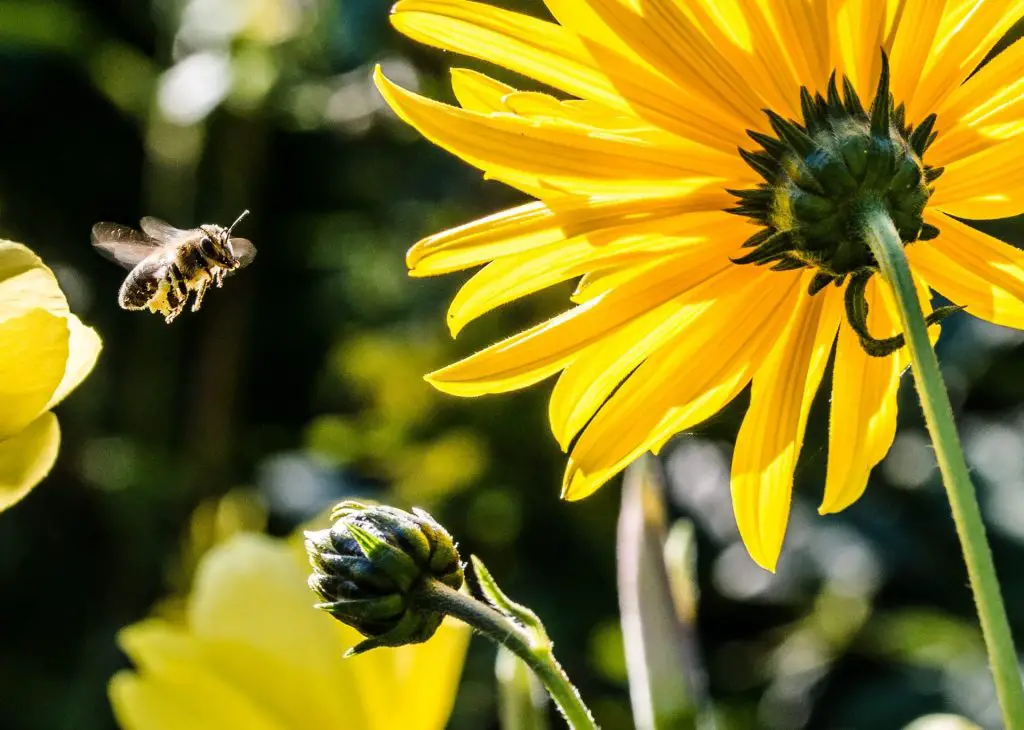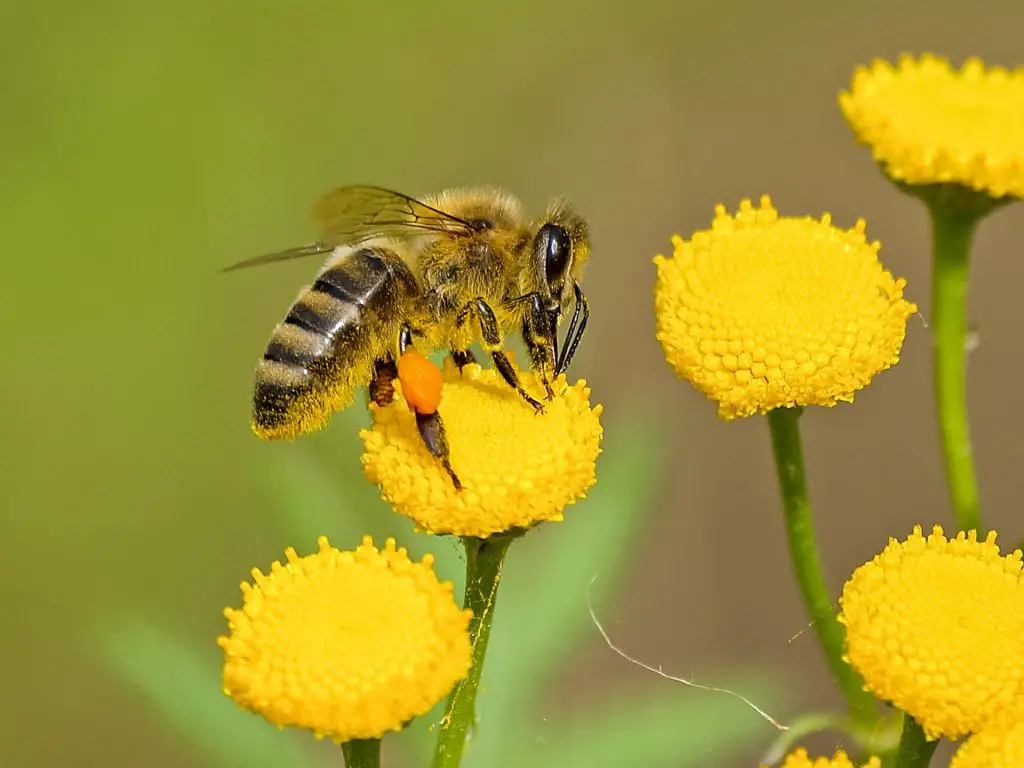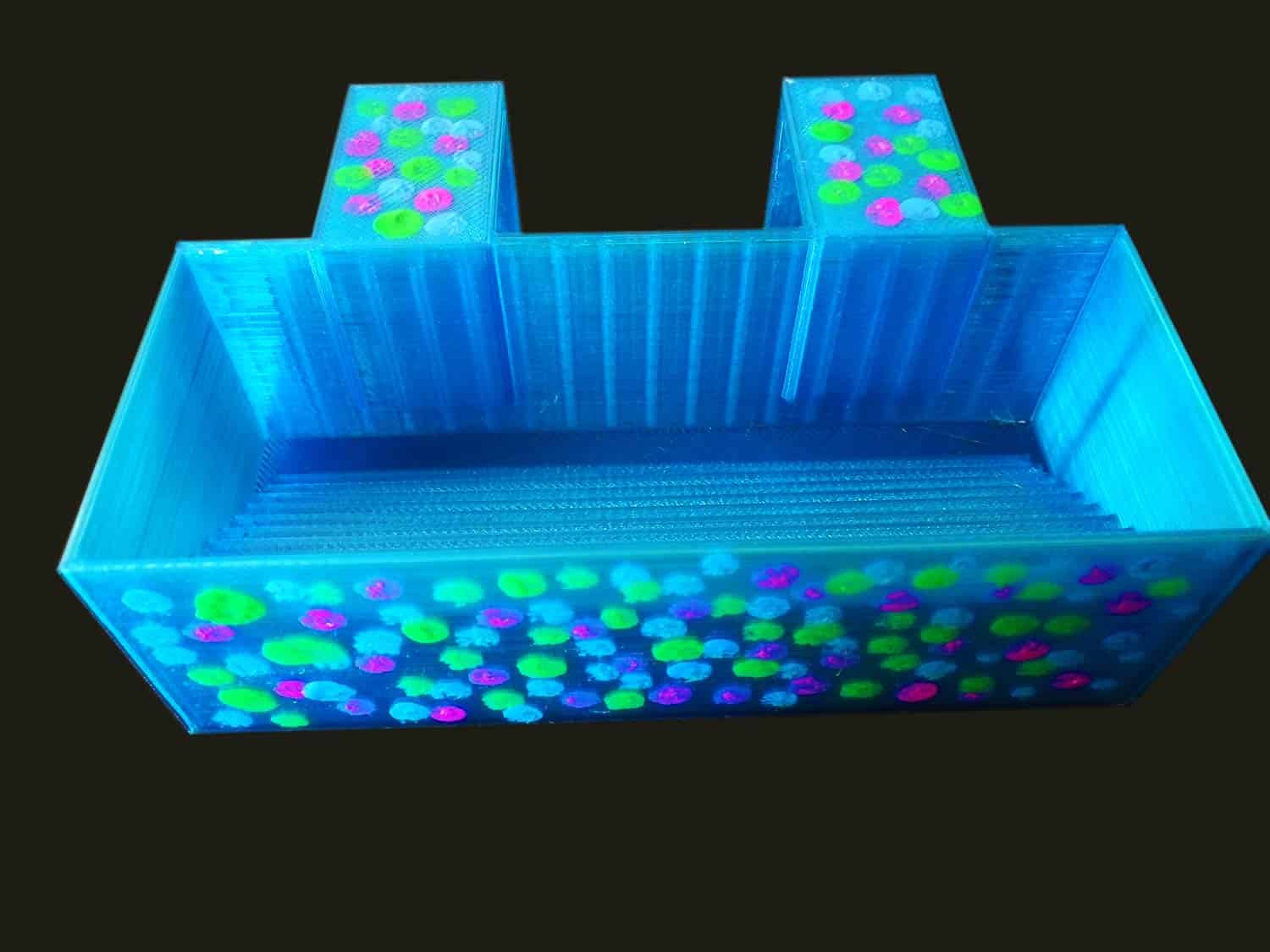
Bees are one of our most important pollinators, contributing to about one-third of the food we eat worldwide1. Unfortunately, these vital pollinators are in decline. You can read more about the reasons of pollinator decline here. However, there are several things you can do in your garden to help encourage your local bee populations to thrive.
Here are five ways to attract bees to your garden:
Have A Diverse Planting Plan
Plenty of flowers provide nectar and pollen at different times of the year, and, for a bee-friendly garden, you’ll want to plant a diverse range of them. Ideally, you should fill your garden with a collection of flowers that have a range of flowering periods from early spring to well into winter. This is particularly important as many other natural nectar and pollen sources will have drastically dwindled into winter.
Although there are plenty of different flowering shapes that bees love, you should try and avoid plants with multi-petalled or double flowers. Generally, they lack nectar and pollen, and many pollinators find them difficult to access due to their abundance of petals.
Plant Native Flowers

Read also our guide to bee-friendly flowers.
Our native insects have evolved alongside our native flowers, and it’s these native flowers that they have grown used to. Plus, there are even some rare species of insects that favour native flowers. So, include plenty of native flowers in your planting plan to attract bees, pollinators and an abundance of other insects.
Alongside native flowers, there are several flowering trees and shrubs that are perfect for bees. To best help bees, you’ll want to choose trees that flower in winter and early spring, when their natural sources of nectar are commonly low.
Some native flowers and trees that are perfect for attracting bees to your garden are:
- Bluebells
- Foxgloves
- Clovers
- Honeysuckle
- Wood anemone
- Knapweed
- Norway maple tree
- Horse chestnut tree
- Black locust tree
- Lime tree
- Lavallée’s hawthorn tree
Create A Bee House
Creating wildlife homes in your garden is the best way to provide safe nesting sites for visiting animals and insects, and creating a bee house gives the perfect nesting spot for these pollinating insects.
There are several commercial bee houses that you could invest in, or you could take on a D.I.Y project and create your own. Once you have a bee box, you should fix it in a south-facing spot where the entrance points down. This way, your bee house will remain warm enough for bees without rain getting in the entrance.
Restrict your use of pesticides

Many commercial pesticides contain lethal doses of neonicotinoids, which are insecticides that are meant to ‘control harmful insects.’ Unfortunately, this includes bees. Alongside habitat loss, pesticides are thought to be one of the biggest killers of bees all around the world. However, many of these pesticides are still available for public use, and you’ll likely find them at most garden centres. You should read their labels carefully and avoid any products that involve harmful insecticides.
Fortunately, there are several alternatives to using pesticides. You can reduce the effect of pests in your garden without using lethal pesticides by:
- Using gardening techniques that boost quick plant growth and dissuade pests
- Choosing garden plants that are resistant to pests
- Regularly rotating crops
- Providing optimal growing conditions by keeping soil fertile and well-draining
- Encouraging predatory or parasitic insects in your garden
- Creating physical barriers to stop pests like slugs or snails
Leave Weeds Alone
Technically, there is little difference between weeds and wildflowers other than our views of them. Many weed species help support our natural ecosystem, including producing plenty of nectar sugar for bees and other pollinators to feast upon. Weeds, including dandelions, clovers, ivy, poppies and chickweed, are particular favourites of bees, so you should let them grow in your garden. However, if you don’t want to let your lawn get overgrown with weeds, you can choose to leave a section that you mow less frequently to give weeds a chance to grow.
Bringing Bees Into Your Garden
Creating a bee-friendly garden will bring many benefits to your garden as well as to bee populations. Gardens buzzing with bees ensure a strong production of fruit and veg and booming blooming. So, try some of our tips to attract bees to your garden for a healthier ecosystem all around.
Sources
1https://www.apicultural.co.uk/the-foods-that-bees-pollinate
Author Bio
Anna Sharples
Anna Sharples is the marketing manager for Sloane & Sons Garden Benches, a premium teak outdoor furniture and accessories supplier.



